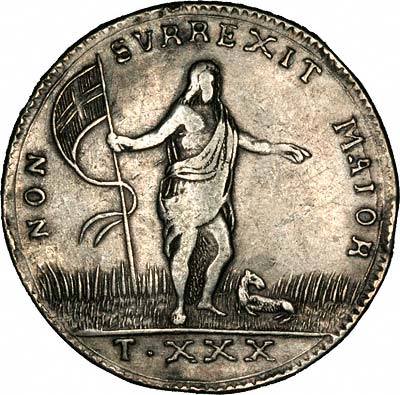| The Very Highest Quality Malta Coins... |
| Malta Coins |
|

|

|
Brief History of Maltese Coinage
With the advent of the British Protectorate in 1800, which was followed by the granting of Malta to Britain as a colony in 1814, the Mint of the Order ceased to function, and the machinery was taken to the Civil Arsenal for storage. In 1828 after being polished and put in working order it was sold to the Greek Government for the petty sum of £100. During the first fifty years of British rule, the legal circulating coinage included the coins of the Knights, Spanish Doubloons and dollars, Sicilian Dollars, South American Dollars, French 5 Franc pieces and English coins. Other foreign coins, though not legally current, also circulated in Malta; these consisted mainly of French Louis d'Or and Maria Theresa Dollars.
The dissimilarity of the intrinsic value of British silver coins with more acceptable continental coins, as well as with the cosmopolitan collection of currencies which circulated in Malta during the British era, were the cause of much discontent in the Island. Furthermore, projects for an Island coinage proposed by the local Merchants and recommended by the local Government were for various reasons not adopted and the currency situation was often very difficult.
Steps for the regularisation of the local monetary system were taken in June 1825 when British silver and copper coins (the Crown, Half Crown, Shilling, Sixpence, Penny, Halfpenny and Farthings) were declared legal tender as a preparatory measure to the general introduction of British metallic currency as the circulating medium in Malta. However, British silver coined in England after 1816 on the basis of 66 shillings instead of 62 shillings per Pound Troy remained unpopular in Malta for a long time after their introduction. Such a type of coin was wholly unserviceable then in operations with the markets of the Mediterranean where the preferred coins such as the Spanish and Sicilian Dollars had an approximate and corresponding value in proportion to their weight of fine silver. Furthermore, though in December 1825 Government departments began to keep their accounts exclusively in Sterling, the Banks, the Commercial Body and the inhabitants did not change their mode of keeping their accounts and of making sales, contracts etc., in Scudi, Tari and Grani.
British gold Sovereigns and Half Sovereigns were introduced in 1826.
British copper coins were declared the sole legal tender copper currency in Malta in November 1827 and in April of the following year all copper coins of the Order ceased to be legal tender. To this effect, a copper coin, called the British Grain (1/3 farthing), had been struck by the Royal Mint in England for exclusive use in Malta and issued for local circulation in 1827. This coin, meant to replace the so-called Malta Grain, locally known as "Habba", and which had been minted by the Order, continued to be struck until 1913. A proposed design for the Grain, sent by the local Government to the Secretary of State in 1825 which depicted the value "1G" within a circle surmounted by the name 'MELITA' on the reverse, was not adopted by the Royal Mint who instead preferred the seated figure of Britannia.
In October 1855, a Proclamation declared Sterling to be the sole legal tender currency in Malta. In spite of this, however, the business and banking community continued to make use of gold and silver coins of the Order as well as certain foreign coins, particularly the Sicilian Dollar. These non-sterling coins were removed from local circulation during the period October 1885 -November 1886 following a decree by the Italian Government withdrawing the coins of the Pontifical State and those of the Kingdom of the Two Sicilies. The remaining gold and silver coins of the Order of St John were demonetised and withdrawn from circulation between October and November 1886. These developments left British coins as the only legal tender coinage on the Island. They remained so until the early 1970s when the Island's coinage system was radically changed.
Coins Wanted
We make an active market in almost all world coins, including Maltese coins. If you have any of these coins to sell, please contact us, or post them to us for appraisal and offer.
If you want to find the value of a coin you own, please take a look at our page I've Found An Old Coin, What's It Worth?
| ...at the Lowest Possible Price |
|
32 - 36 Harrowside, Blackpool, Lancashire, FY4 1RJ, England. Telephone (44) - (0) 1253 - 343081 ; Fax 408058; E-mail: The URL for our main page is: https://24carat.co.uk | Chard(1964) Ltd |